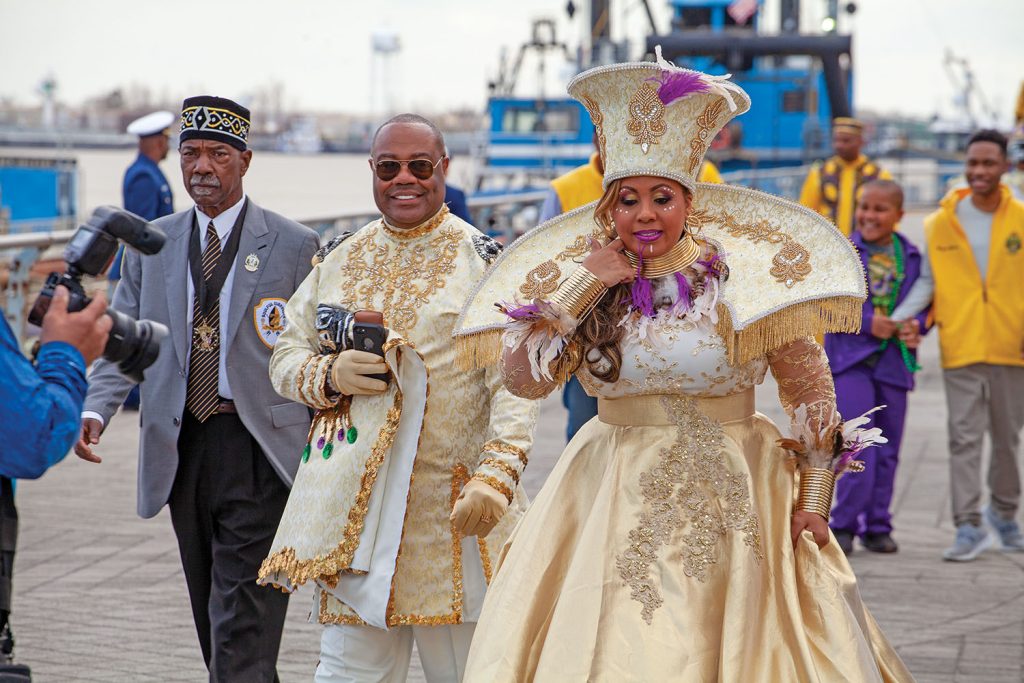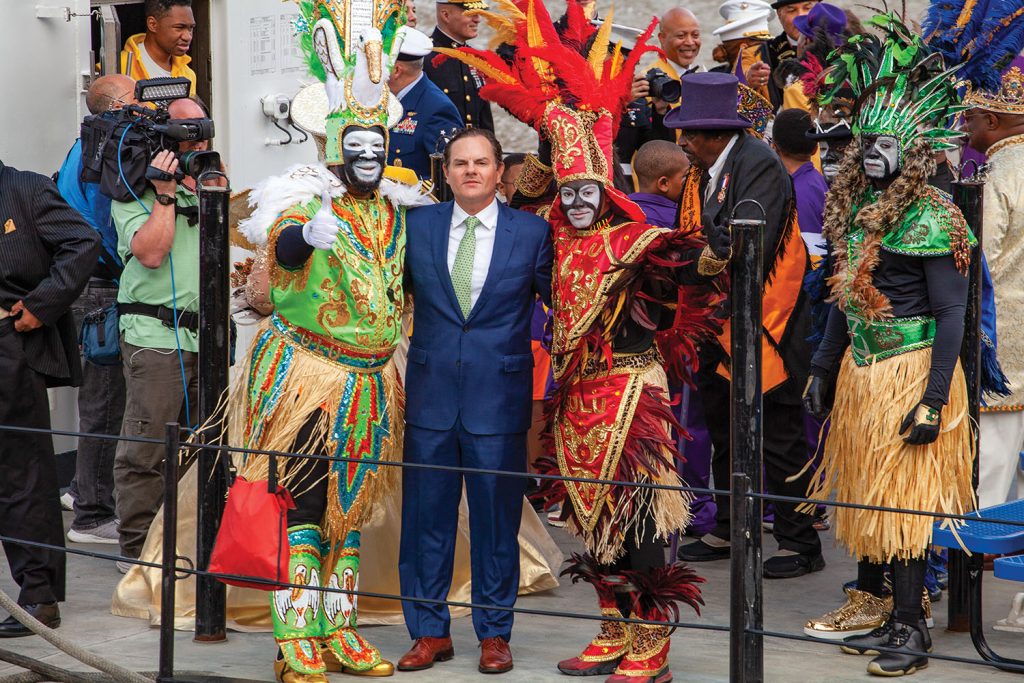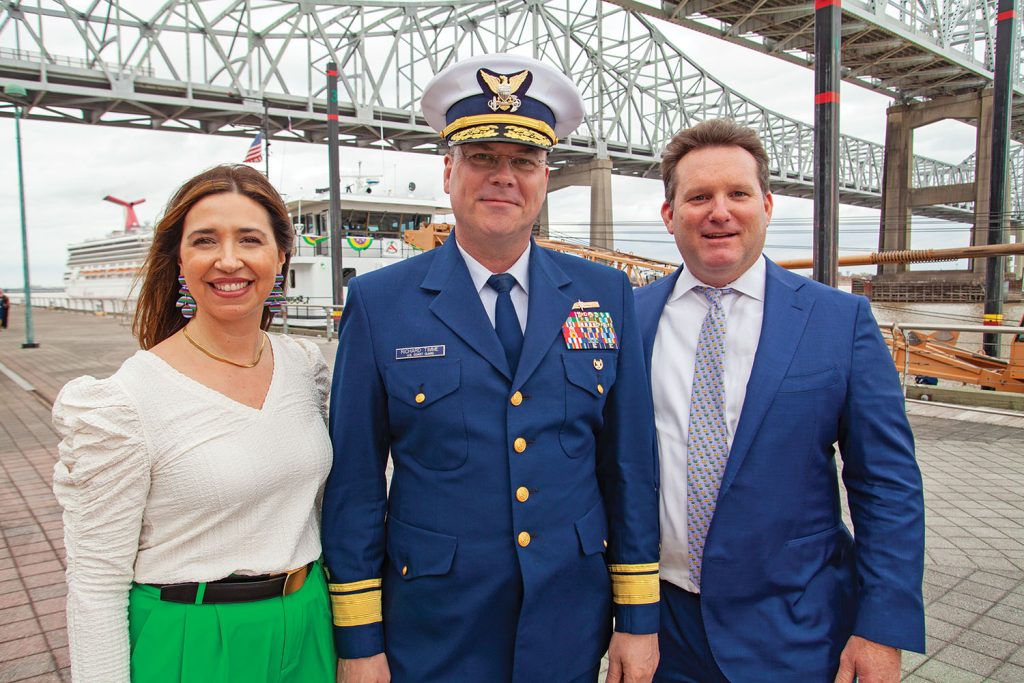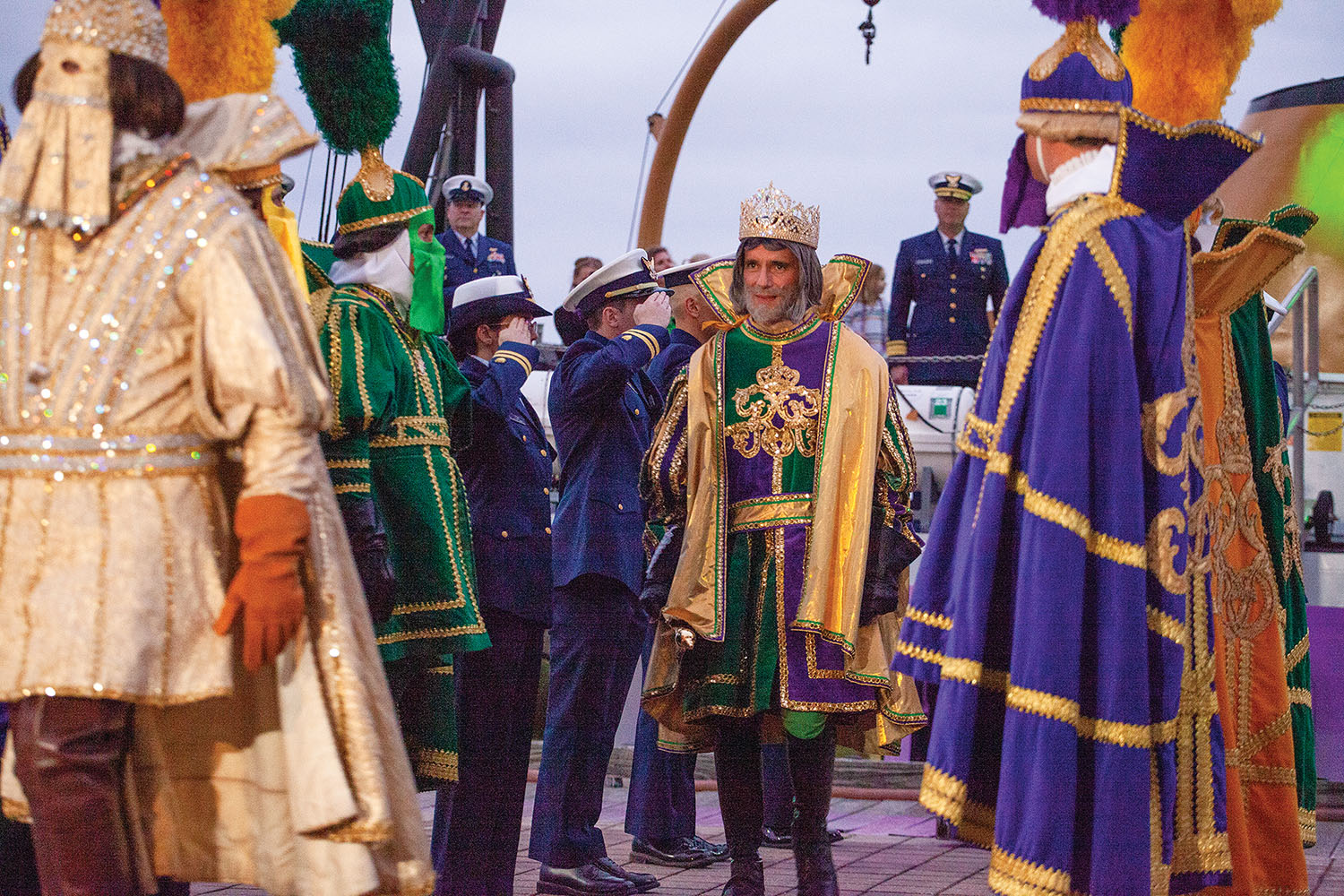The tradition of Rex, the King of Carnival, making a grand and dramatic arrival to New Orleans, his “Winter Capital,” the day before Mardi Gras dates back to 1874, just two years after the first Rex parade.
“It was a big deal,” said Stephen Hales, archivist and historian emeritus for the School of Design, the official name of the Rex organization, “with dozens of boats ringing their bells and shooting their cannons.”

There were a few years where Rex arrived by train, but for the most part, the King of Carnival arrived aboard his “Royal Yacht.” Unfortunately, World War I torpedoed the tradition, and Rex’s river arrival occurred only once in the next 70 years. In 1971, Rex arrived aboard a Tidewater crew boat to mark the organization’s centennial.
The traditional river arrival returned permanently in 1987, the same year the Monday before Mardi Gras was officially rebranded as “Lundi Gras.” That year another new tradition also began, with the U.S. Coast Guard delivering Rex aboard one of its cutters. Soon thereafter, the Zulu Social Aid & Pleasure Club also began transporting its royalty on a Coast Guard cutter on Lundi Gras. Rex and the king of Zulu began the tradition of meeting at Spanish Plaza in 1999.
The Coast Guard continued its role in the history and tradition of the New Orleans Mardi Gras this year on February 20, Lundi Gras, by delivering first Zulu royalty, then Rex and his entourage, aboard the Cutter Pamlico, a 160-foot inland construction tender. Rex and the Zulu king met nearby, where they were declared monarchs of New Orleans and given keys to the city.
“The Coast Guard has been wonderful to work with,” Hales said. “It really makes Monday a special occasion.”

The ride aboard the Pamlico, with its four spuds, crane, beacons and reflective channel markers, put the Coast Guard’s essential work of marking navigation channels on full display. What’s more, the mingling of the Pamlico crew and officials from Sector New Orleans and the Eighth Coast Guard District with Carnival royalty and local maritime leaders present for the ride along also highlighted the Coast Guard’s commitment to community involvement, said Rear Adm. Richard Timme, commander of the Eighth Coast Guard District.
“I think all our military forces, including the Coast Guard, strive to be part of the communities where we live,” Timme said. “There are great traditions around the country, and here in New Orleans, it happens to be Mardi Gras. I love the fact that we’re giving a nod to the Mississippi during Mardi Gras.”
The symbolism goes beyond New Orleans and Carnival, Timme said, who noted that the entire export corridor of south Louisiana is a national asset that feeds and fuels the world.
Timme is actually on his second stint in New Orleans with the Coast Guard. In the early 1990s, he was a single lieutenant living with roommates in New Orleans. Now, he’s married with two young children. Timme, who admitted it’s nearly impossible to describe the New Orleans Mardi Gras to someone who’s never experienced it, said his ‘90s Mardi Gras experience is much different from today.

“I was very fortunate to return much later in my career with small children and a wife who’d never been here,” Timme said.
For the younger members of the Coast Guard, Timme had a simple message: “You do not go in without a battle buddy.”
Timme said he planned to celebrate this year’s Mardi Gras near the intersection of Washington and St. Charles avenues. For his two kids, Timme said he was hoping for a successful nap time.
Caption for top photo: Ludovico Feoli, the 2023 King of Carnival, arrives at Spanish Plaza in New Orleans February 20 for the traditional meeting of the royal courts of the Zulu Social Aid & Pleasure Club and the School of Design, better known as the Rex Organization. As in years past, the U.S. Coast Guard transported both courts from the Port of New Orleans to the French Quarter aboard a cutter, this year the Cutter Pamlico, a 160-foot inland construction tender. (Photo by Frank McCormack)




